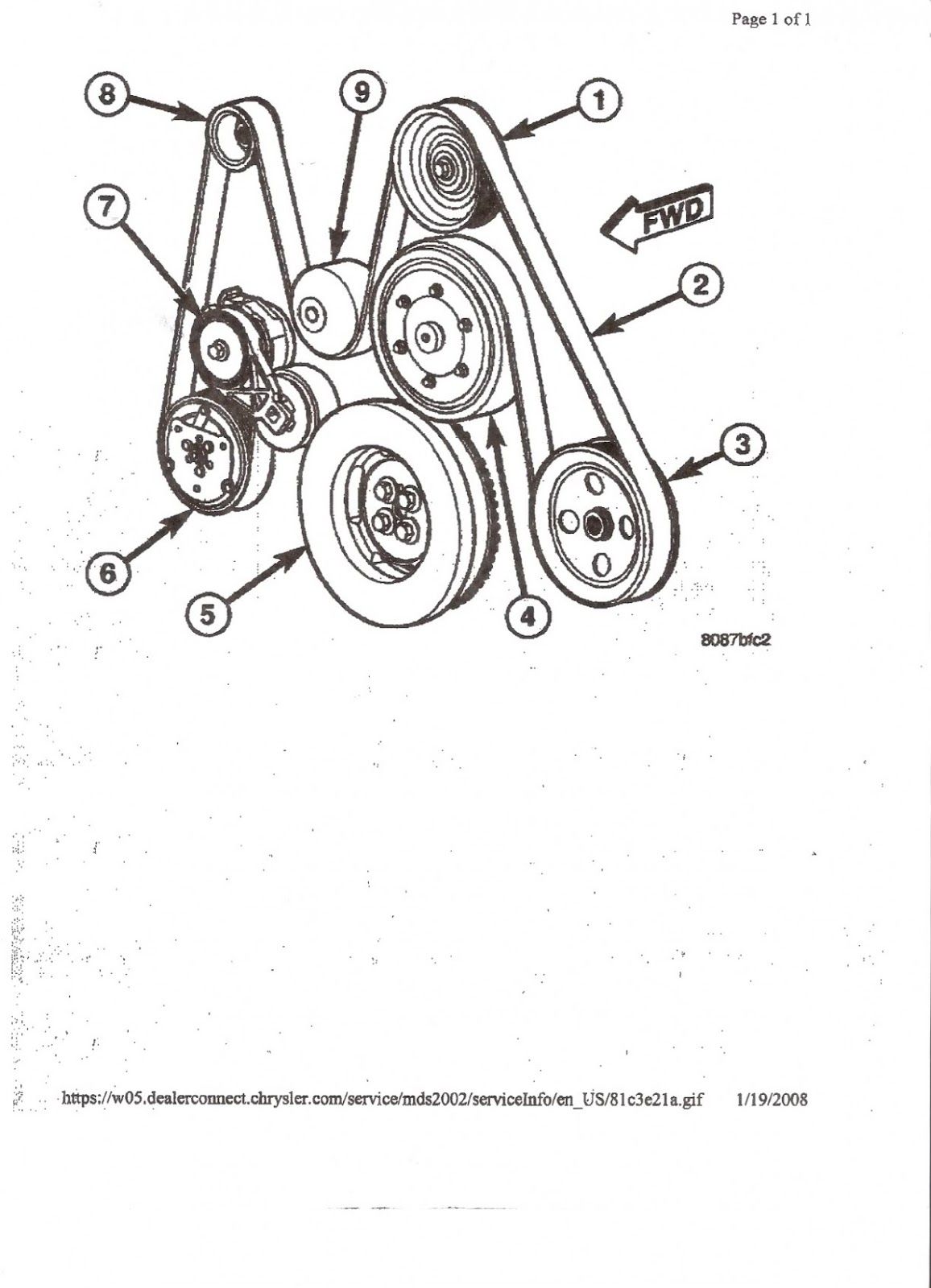Locate the 2004 Dodge Durango serpentine belt routing diagram using these direct methods:
Step 1: Consult the Owner's Manual
Check the vehicle's owner's manual index for "Serpentine Belt" or "Belt Routing". Diagrams are often included in a dedicated maintenance section.
Step 2: Inspect the Underhood Sticker
Open the hood and examine labels affixed to:

- The radiator core support (front crossmember)
- The underside of the hood
- A strut tower (left or right side)
Look for a graphic clearly showing belt path around pulleys.
Step 3: Search Authoritative Online Repair Databases
Access professional automotive repair information systems:
- Input exact vehicle details (Year: 2004, Make: Dodge, Model: Durango).
- Select the correct engine (e.g., 4.7L V8 or 5.7L Hemi, if applicable).
- Navigate to "Engine Mechanical" or "Belt Drive" sections and locate the serpentine belt diagram.
Reputable Sources: AlldataDIY, Mitchell1 DIY, ChiltonLibrary (often accessible via public library subscriptions or auto parts store computers).
Step 4: Use Repair Manuals
Consult physical or digital copies of:
- Factory Service Manuals (FSM) for the 2004 Durango (highest accuracy).
- Haynes or Chilton repair manuals specific to 1998-2003 or similar year ranges; the diagram often remains valid. Check book indexes.
Step 5: Verify Component Count & Idler Position
- Count pulleys: Identify Crankshaft, Alternator, Power Steering Pump, Water Pump, Air Conditioning Compressor, and Idler/Tensioner pulleys.
- Note Idler Location: Some engines use idler pulleys solely for routing; pinpoint their position.
- Observe Tensioner Type: Automatic tensioners simplify routing but confirm the belt wraps correctly around its pulley.
Critical Reminder: A diagram provides the routing path. Before removing the old belt, draw your own sketch or take a clear photo of its current configuration as a definitive reference during installation.


